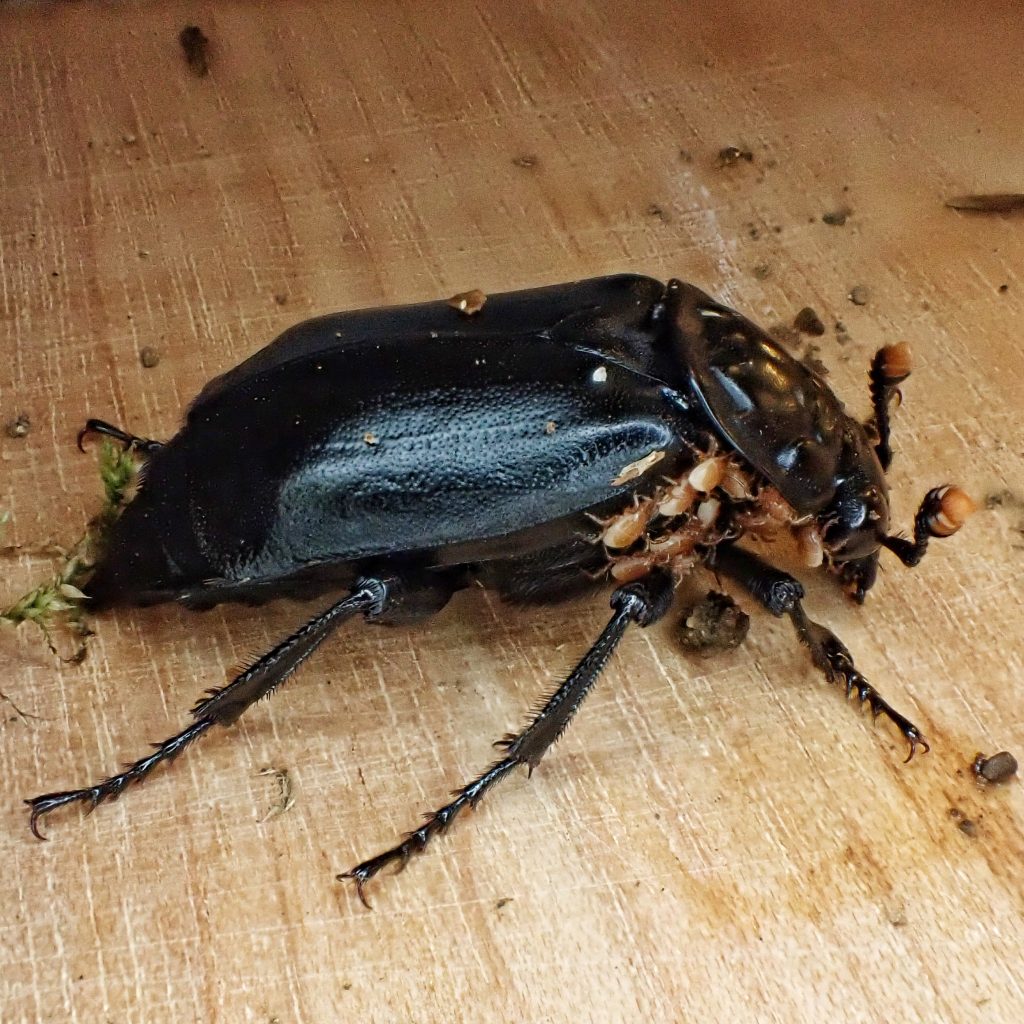
In spite of (okay, let’s be honest- at least in part because of) their disgusting lifestyle, I kind of love carrion beetles (family Silphidae), although the only genus I have much experience with is Nicrophorus (burying beetles). I feel the same way about vultures, maggots, and millipedes. They are opportunists, but not profiteers out to make a killing. They are just the cleanup crews, making a living from the only thing that is certain in the natural world. And there is also that inversion of perception, wherein that which is most disgusting and fearful to us is what is most beautiful to them, and a dead mouse smells sweeter than any rose ever will.
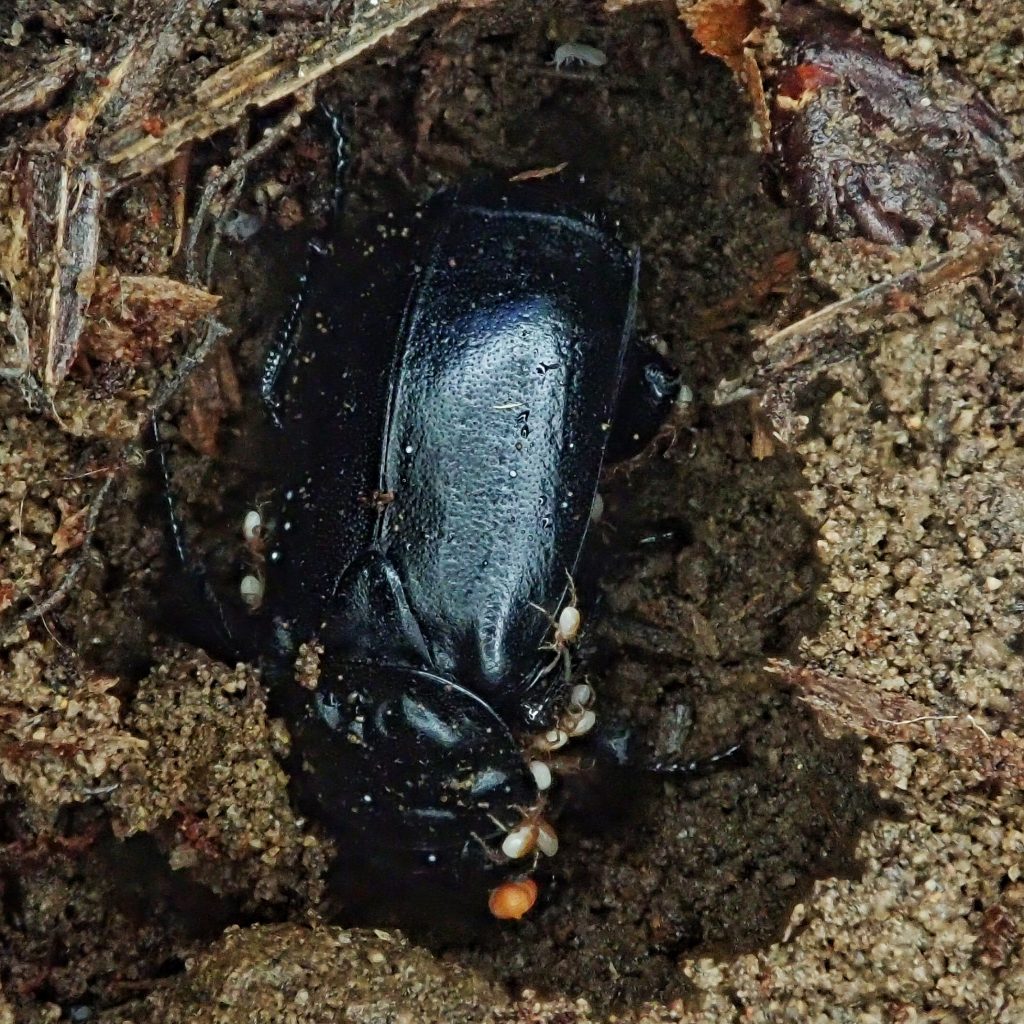
In the case of Nicrophorus sp., they are also very good parents! First male and female burying beetles find (by smell, through the sensilla coelosphaerica located at the end of the antennae) a suitable small mammal carcass (mostly mice, voles, chipmunks etc; adults will feed on birds but do not use them for child rearing), and, if it is on a rocky or excessively hard substrate, move it to a better location by getting under it and lifting it with their backs (for this reason they prefer carcasses that weigh less than 100 grams, although that is still over 70 times the combined size of the parents, since the specimen I collected yesterday weighs .67 grams). When they have found a good substrate they crawl back and forth underneath it, pushing out soil until they have excavated a pit that gets it below the surface. They then cover it with the displaced soil, and the female builds a brood chamber alongside the corpse in which to lay her eggs.
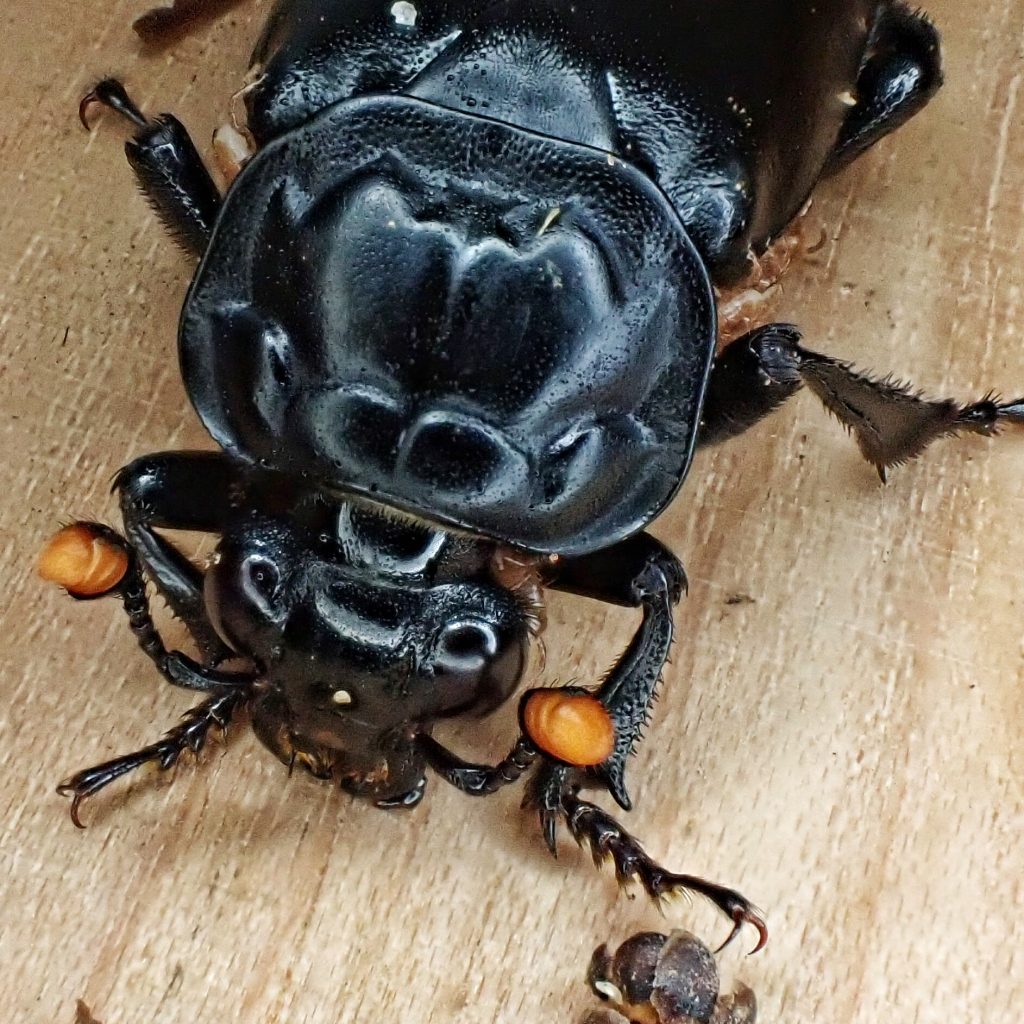
Next they remove the hair from the carcass and form it into a ball, and spread anal compounds on the carcass, which are thought to deter bacterial and fungal growth. Then they create a bowl in the ball, and excrete enzymes into it to create a nutritious soup. After which they sing a dinner song to call the larval hatchlings to feed! They do this by rubbing a plectra (a scraper) on the bottom of the elytra, against a pars stridens (file) on the lower abdomen. When the kiddos show up mom and dad ingest the meat soup, and then regurgitate it into the mouths of the larvae. They continue doing this through all three instars of the larvae, as well as defending their brood against attack. The male (no surprise) burns out on the child rearing and bails after about 10 days, but mom sticks it out for a couple more days, until all of the larvae have entered pupation.
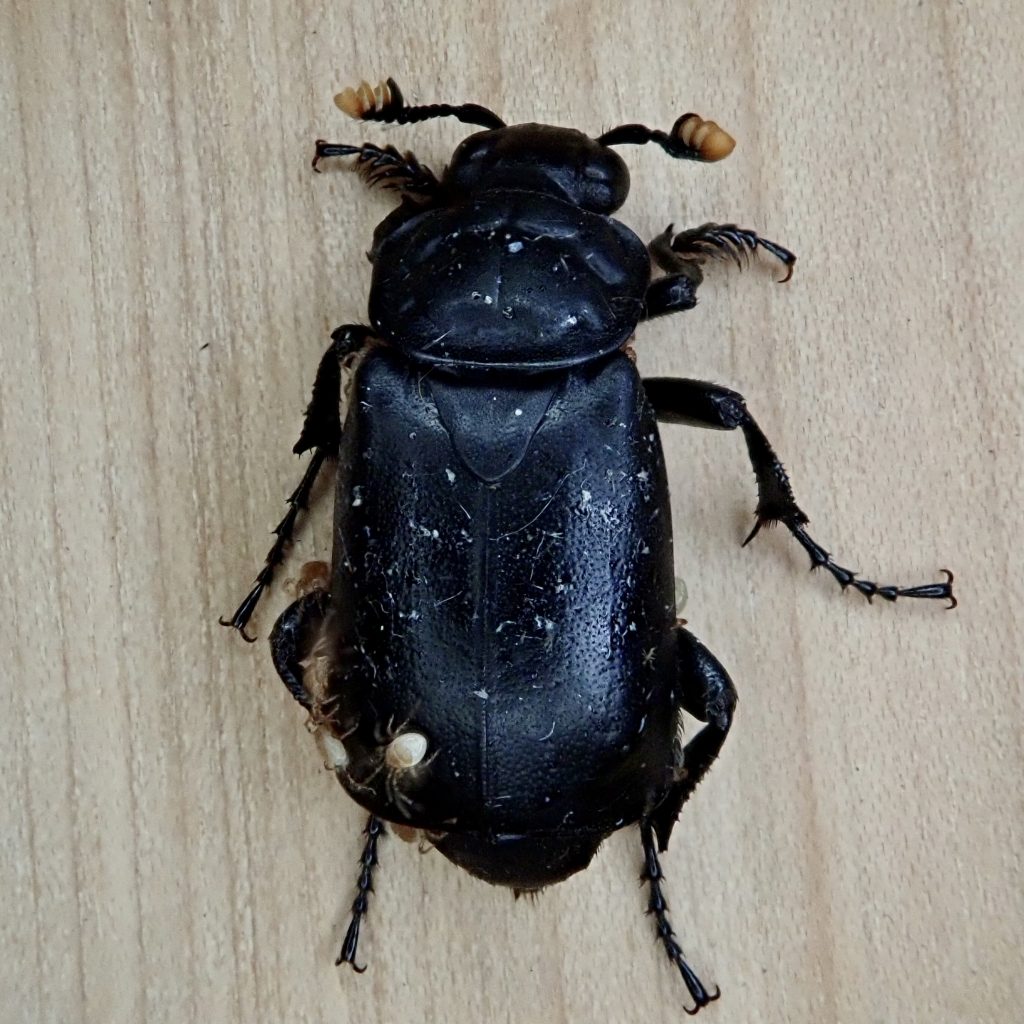
The timing of the reproductive process is ambiguous in the literature, but it looks to me like breeding ready males may be the ones who locate the brood carcass. In my friend Cynthia Brast-Bormann’s fun and informative article about burying beetles, she talks about the males doing a headstand waggle or sternzeln, and projecting ‘come hither’ pheromones into the air. And in the comprehensive paper by Sikes (1996) he talks about putting a male and female together with a mouse carcass, and, doing the math, it looks like egg laying happens within a couple days. So it may be a matter of breeding not occurring until the happy couple have a dead critter to call home/nursery/larder.
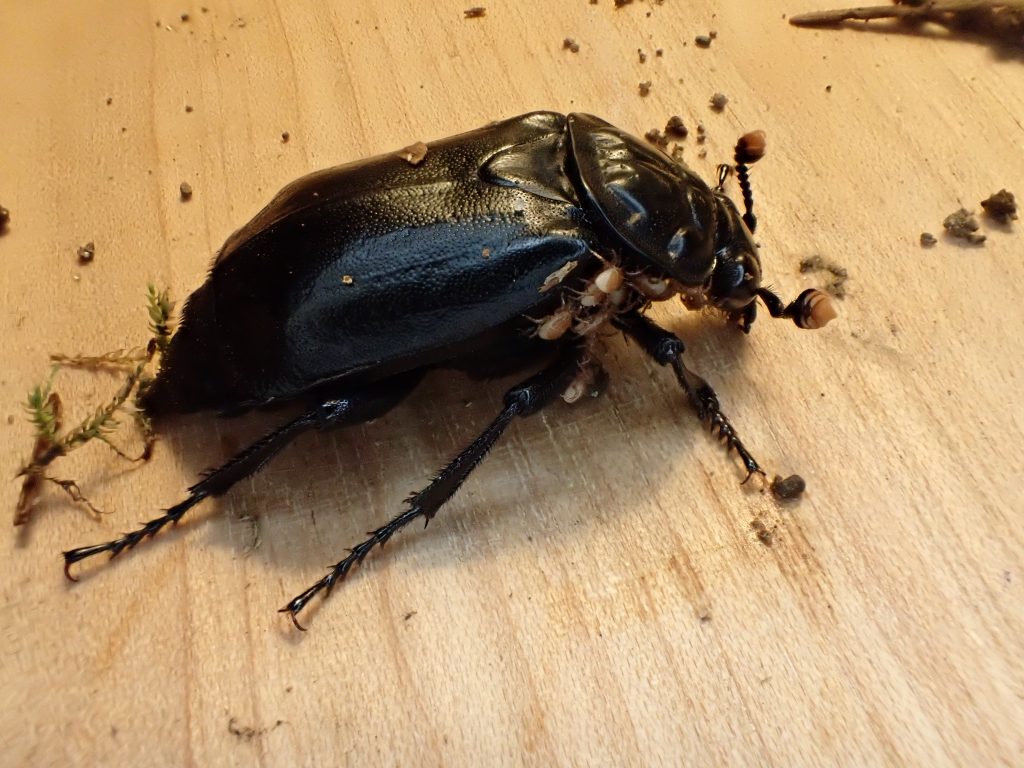
Then there are the mites. One seldom, if ever, finds a Nicrophorus without an attendant load of mites (in three species and roughly a dozen specimens, I have never seen a burying beetle without mites). But the mites are not harmful to the beetle. Instead they are just along for the ride, engaging in what is called phoresy (a term for the practice of many arthropods of hitching rides by grabbing onto something with better locomotive skills than they have), in order to get to a better habitat. In this case, some rotting meat and it’s attendant maggots. The mites (mostly in the genera Poecilochirus and Pelzneria) lay eggs in the decomposing flesh, and they and their young feed on the maggots, which also helps the beetle and its larvae by cutting down on the competion for the limited resource. Although sometimes, due to a lack of maggots, the mite larvae will turn to feeding on the beetle larvae. Now that’s a rude houseguest!
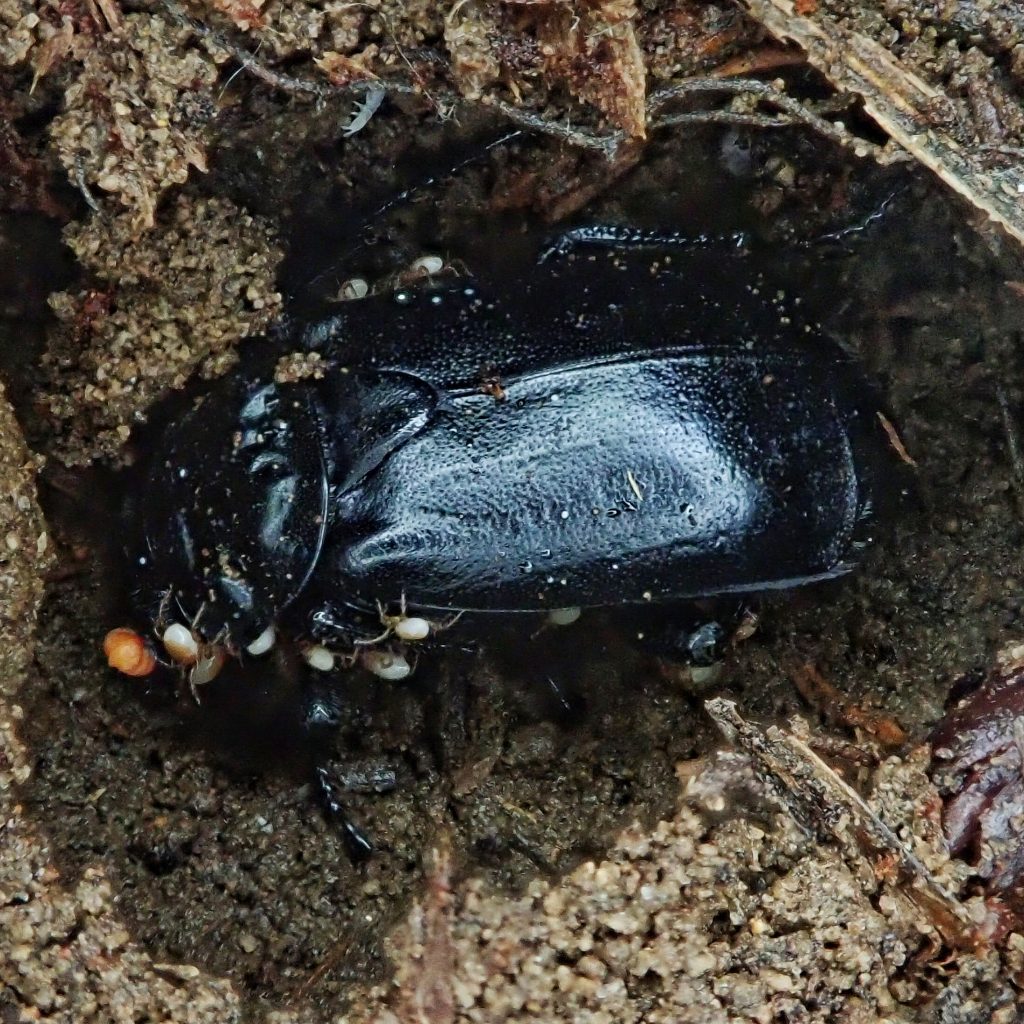
Nicrophorus nigrita is the only all black Nicrophorus, which is thought to be a thermoregulatory adaptation to both living in colder climates and still being active during the colder months. I have found two of them in recent weeks. One was hiding under a log and accompanied only by a bunch of mites, but the other was under the rotting corpse of a domestic sheep that someone had tossed off a country road, and was living with a few thousand maggots and a few dozen Necrophilus hydrophiloides (Flat Brown Scavenger Beetles). Black Burying Beetles are also unusual in being crepuscular, and in not seeming to have a built in reproductive diapause.
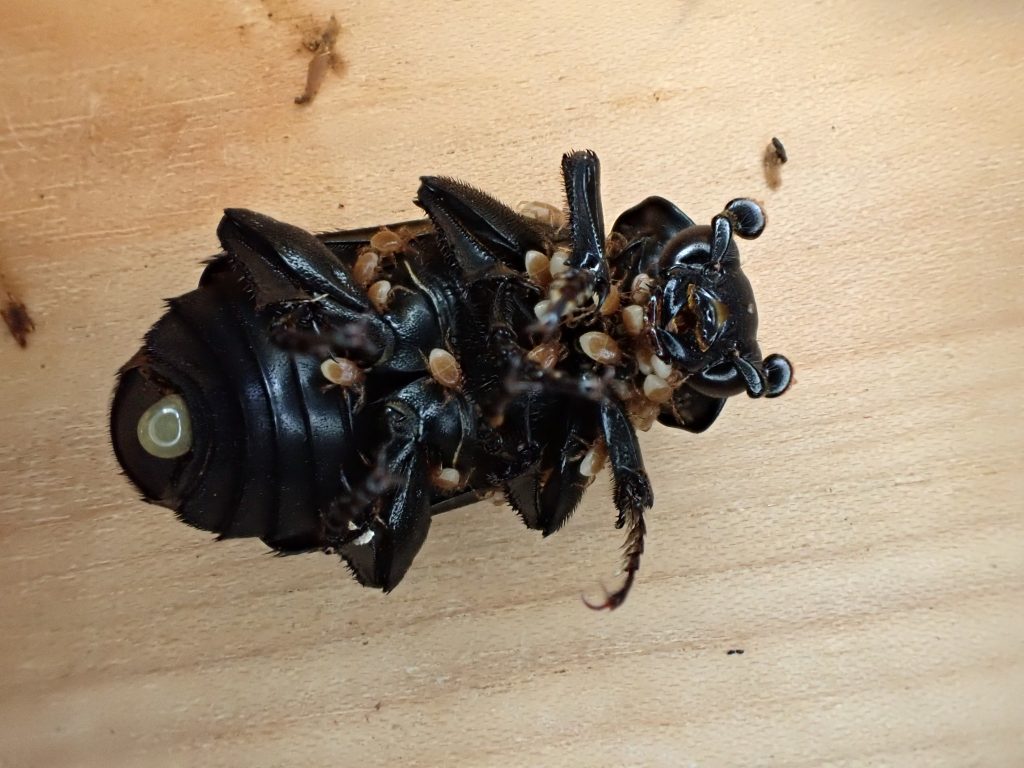
Description-Medium sized (13-18mm), all black beetles with orange clubs on their antenna, and smooth, short elytra that do not cover the abdomen; pronotum is a rounded rectangle with flat margins and an irregular but symmetrical raised center; ventral hairs are black.
Similar species-Melanic N. guttula have an orange spot at the ‘shoulder’ of the elytra, and yellow hairs below that; other Nicrophorus sp. have orange patterns on elytra; other Silphidae and Agyrtidae (primitive carrion beetles) have sculpturing on the elytra.
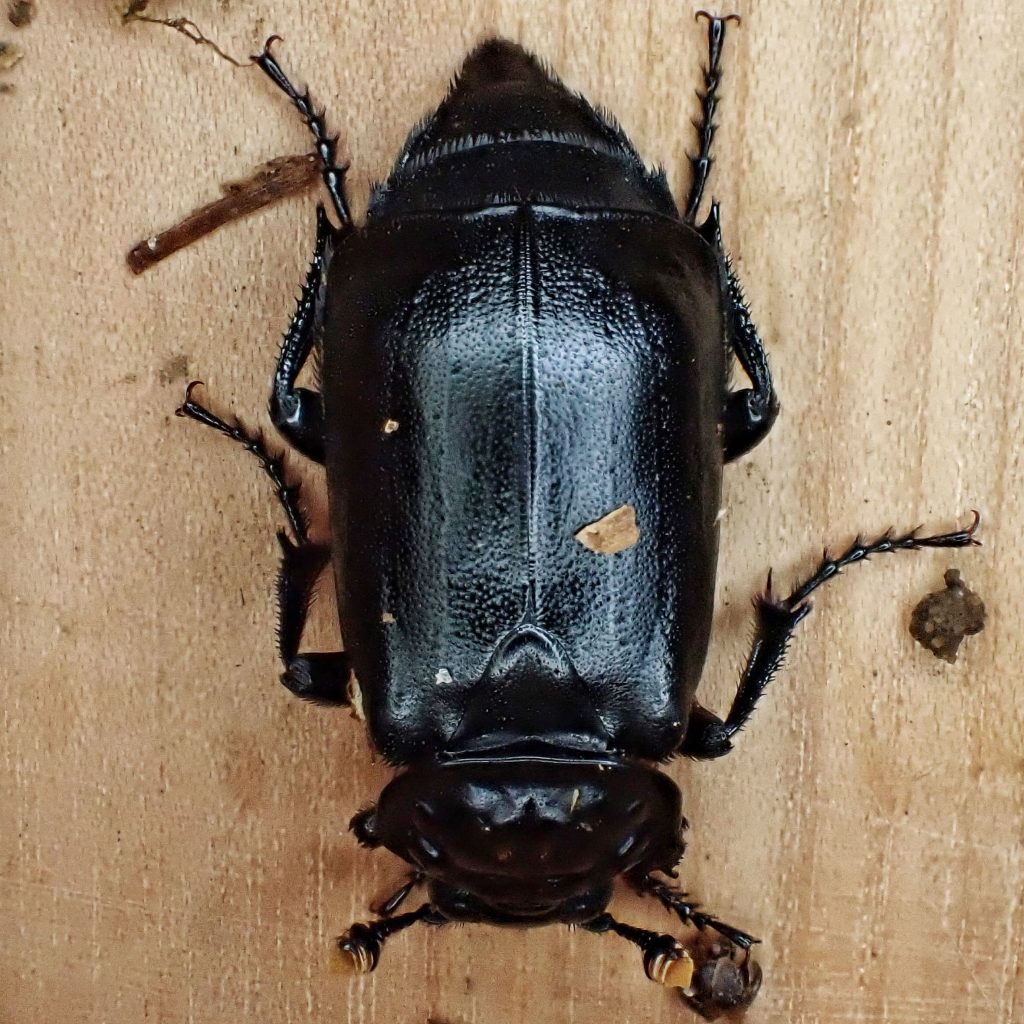
Habitat-Mesic forests and woodlands; they seem to find carrion more easily in cooler, humid habitats.
Range-West Coast of North America; primarily from the eastern Cascades west to the Pacific, and in sw Oregon and nw California; small, disjunct populations in mesic forests in eastern Washington and eastern Oregon.
Eats-Carrion for adults, carrion and carrion soup for the larvae
Eaten by-Larvae are sometimes attacked by the phoretic mites, if the maggots upon which those mites prefer to feed are not available; adults exude noxious fluid when threatened, which undoubtedly reduces predation.
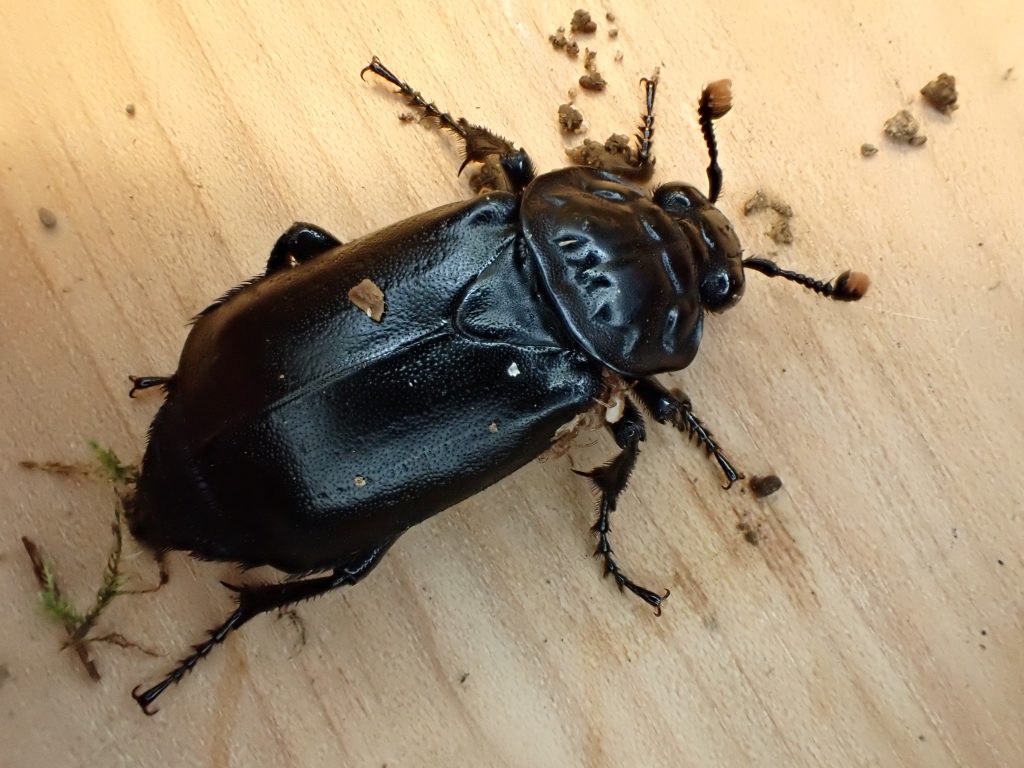
Adults active-Crepuscular, more commonly active at dusk rather than dawn, but also active at night during full moon; year around, but less active in winter.
Life cycle-Around 15 eggs are laid in carrion; eggs hatch in 1-3 days; larvae are fed and protected by both parents; larval stage lasts 10-13 days before pupation; pupal stage lasts about 10 weeks before the adults emerge; apparently raises multiple broods per year, whenever suitable carrion is found, but wild reproduction during the winter months has not been documented; I cannot find information on lifespan of adults.

Etymology of names–Nicrophorus is from the Greek words for ‘carrier of the dead’, and I suppose it references the fact that sometimes they move the carrion to a location with a better substrate for burying it. The specific epithet nigrita is Latin for ‘blackened’, referring to the overall lack of color on the body.
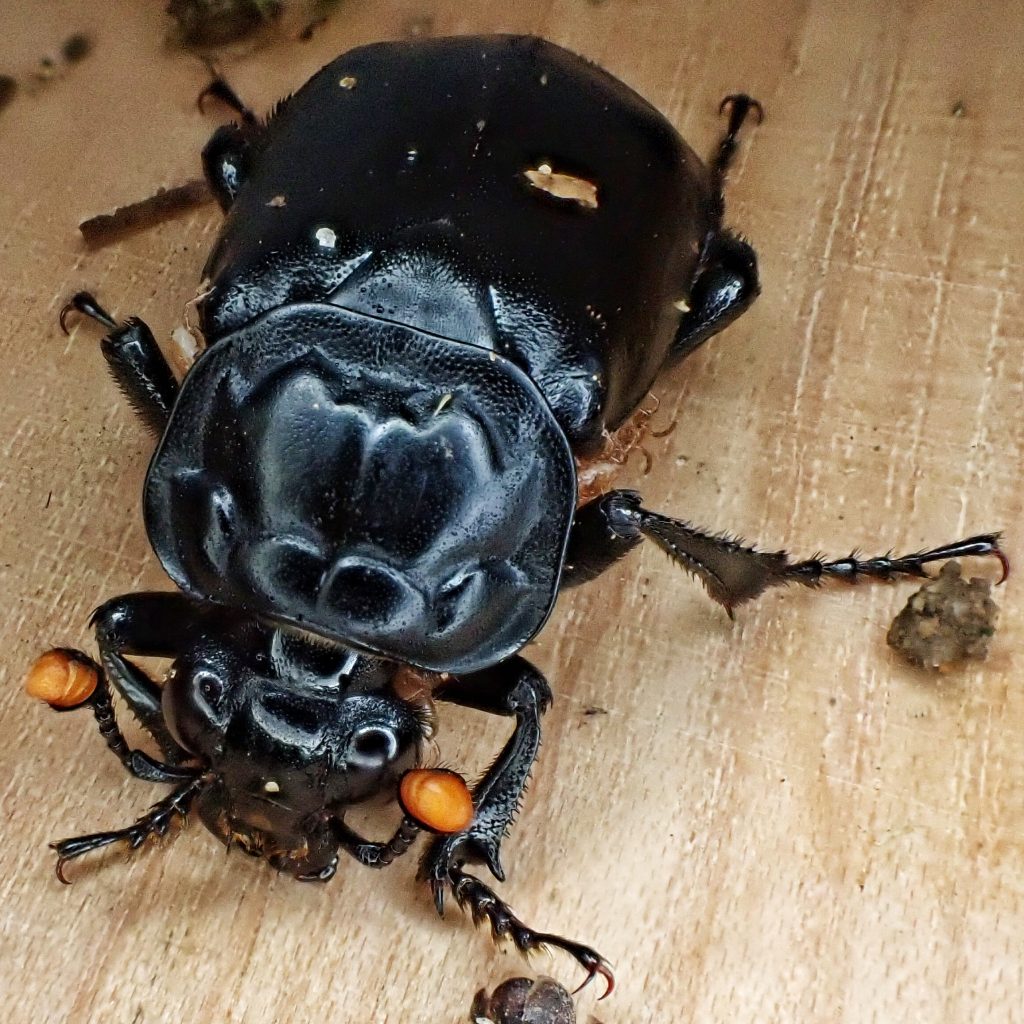
Nicrophorus | Search Results | Bugging You From San Juan Island
https://bugguide.net/node/view/49283
https://m.northcoastjournal.com/NewsBlog/archives/2017/04/02/humbug-hitching-a-ride
https://publications.gc.ca/collections/collection_2016/aac-aafc/agrhist/A42-42-1985-13-eng.pdf
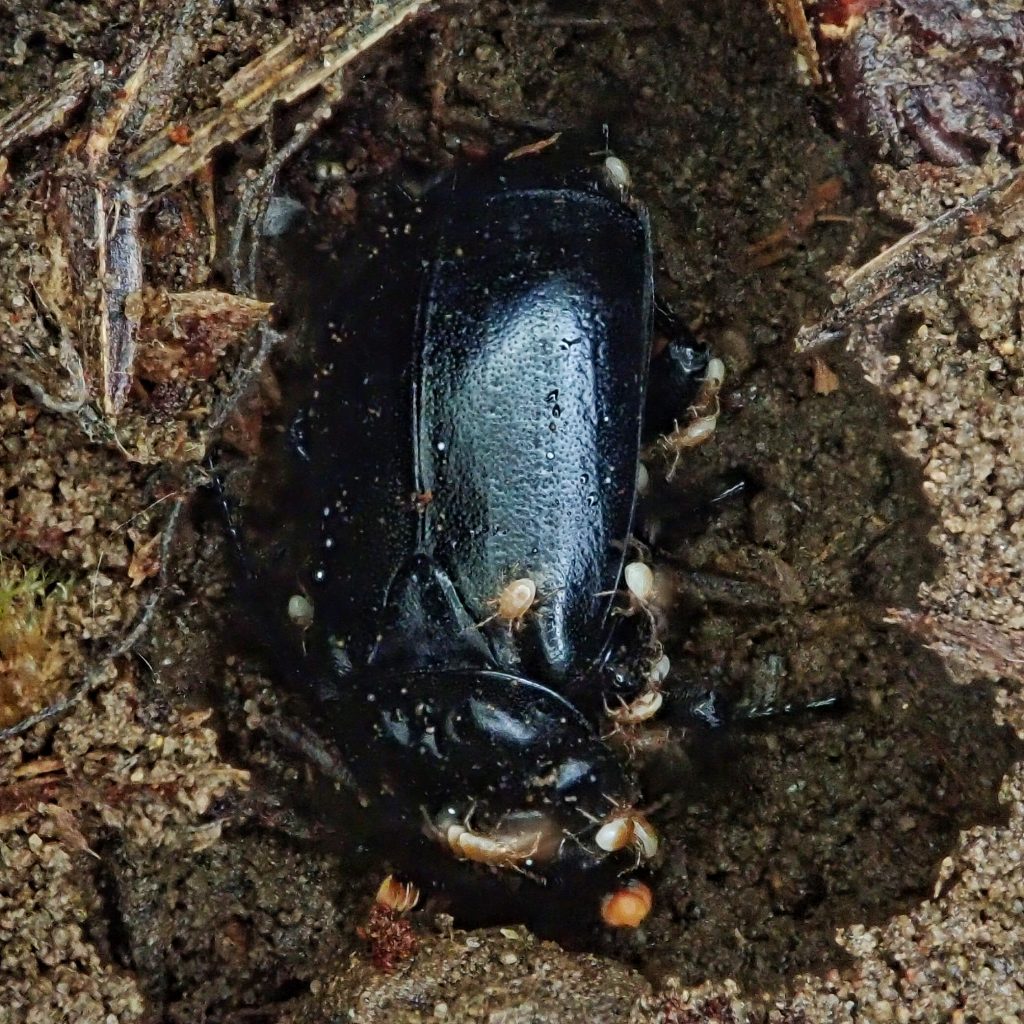
This was a fascinating read. I really appreciate this series!
Thank you for your appreciation, Elaine!
I so enjoyed this, thank you for all of this info!
Thanks for your appreciation!
My beagle puppy is a hunter and one of her favorite finds are black beatles. Do I need to worry about her playing with/ eating them?
I don’t think you need to worry, Amy. They are not toxic, just noxious. Probably taste pretty bad, but ultimately harmless.
We have found three of these inside our house in the last few months. The last one was flying around. We live in the Willamette Valley in Oregon. Are they common here?
Yes, they are fairly common. It does seem odd to find them in your house. Are you near someplace where there are a lot of dead animals? It could be they are just trying to find shelter.
I just found my first ever black burying beetle, in our garbage can! I’ve never seen one before and your article was super helpful. I was finally able to convince my boyfriend it wasn’t going to eat him and it is a good critter to have around!
So glad to hear that the site and information was useful to you, Robbin!
Such a cool yet little-known beetle! Do they play any significant role in garden ecosystems?
Only if there is carrion for them to bury there, in which case it could act as a fertilizer.